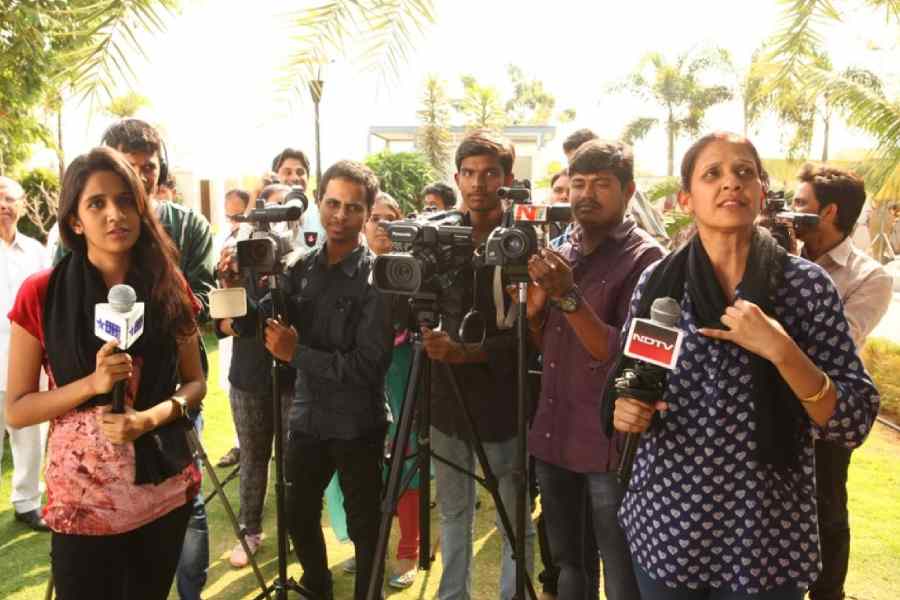Did the media fail the country in the run-up to the Lok Sabha elections? The popular assumption after the Bharatiya Janata Party failed to get a majority has been that the country was taken by surprise because the media, among others, did not do its job — that the mainstream media was willing to buy the Narendra Modi government’s narrative and self-censor any bad news. Are these assumptions true or was the media genuinely ignorant of the ground reality?
When The Wire commissioned a monitoring of election season unemployment stories on television, a media monitoring lab found that 10 major Indian news channels focused on unemployment only 113 times over five months. Aaj Tak had the most coverage of the issue, whereas News18 India and Times Now Navbharat never focussed on it, even though unemployment had already emerged as a defining election issue.
There was self-censorship, there was ignorance of the emerging ground reality, but it was more complicated than that. Rural India is not on the media’s radar unless there is a big story — such as demonetisation, the Covid-19 lockdown and the elections — that brings reporters out there. There was a convergence of reasons which came in the way of sensing widespread rural distress. India’s fourth estate ceased to report on agriculture, the larger rural economy and the labouring classes a long time ago. Major events bring out reporters, but seasoned journalists tracking these sectors or state correspondents assigned to track these issues have disappeared. State bureaus in major print and TV outlets have shrunk to one reporter at best.
Changes in the priorities of the media over the last couple of decades have been brought about by viability issues, problems that affected the freedom to function, and class issues which made rural distress steadily invisible. When digital ventures supported by grants came into being in the 21st century, we began to get more ground reporting than we did in the intervening years post liberalisation. But the Modi government does not like bad news. It turned hostile to many of these websites and put pressure on their funders.
But a government that shuts out reporting which tells it that everything is not hunky dory is not getting feedback on its governance and schemes.
Meanwhile, the Centre for Monitoring Indian Economy, which is a private data monitoring company, began to put out employment and wage statistics. These findings were regularly shared in a newspaper column. They were not flattering to the government’s performance and the person who runs the CMIE stopped writing it. One can only guess what the reason might be.
Business reporters are currently more taken with tracking economic growth than wage growth, which is an indicator of working-class well-being (Modi talks a lot about the former, not at all about the latter). Today, almost all reporting in the general press is on employment trends, and wages are not tracked. Employment has become a buzzword because it turned into an election issue, but low wages indicating surplus labour is missing from the discourse. The press did not identify this as a dimension of unemployment.
The data, though, are there to tap. The latest Wage Rates in Rural India (according to data from the Labour Bureau and National Sample Survey Office) show that the annual growth rate of real wages for male workers from 2014-15 to 2023-24 was 0.8% for general agricultural labourers, 0.1% for non-agricultural labourers, and -0.2% for construction workers. If per capita income is growing at an average rate of 5% and wages of informal workers (adjusted for inflation) are growing at less than 1%, clearly there is a problem.
Why did the mainstream press not use this annual reporting to decide that it needed to send its state correspondents out to the districts to check how rural families were faring? Do you need a disaster to get a story?
In the meantime, India’s no-jobs story is a complex one. Two detailed reports in Mint and Business Standard last week spelt out why. One sought to explain why the 2010 to 2019 period became the lost decade for jobs. The other asked, “Is shrinking of the informal sector an indicator of formalisation of the unincorporated economy, or its growing hardship?” Between them, they looked at the different data sets that have come from different ministries and the Reserve Bank of India as well as an International Labour Organization report and shed some light.
We have the business press to tackle the jobless growth phenomenon, and TV, print and digital reporters to look at how people are faring on the ground. The former does not cost media houses anything more than the salaries they already pay, the latter do. Over the last three decades, doing ground reporting has become increasingly restricted to election time in mainstream, advertisement-dependent media. Election reporting does not even begin to compensate for the year-round neglect of wages, livelihoods, poor schools and hospitals and other issues. Reporters go into the countryside primarily to gauge who is going to get the votes.
And finally, there is also the class issue. Journalists in newsrooms are better educated than they used to be — MBAs, IIT graduates and lawyers are to be found in the ranks of the business press. Would they want to do the labour or farm beat or more seductive ones such as politics, banking and the economic ministries? The bigger class issue, of course, concerns India’s English media consumers who do not want to be constantly reminded of poverty. India is a world-beating economy, right? Not a poor country!
Sevanti Ninan is a media commentator. She also publishes the labour newsletter, Worker Web. https://workerweb.curated.co/issues











